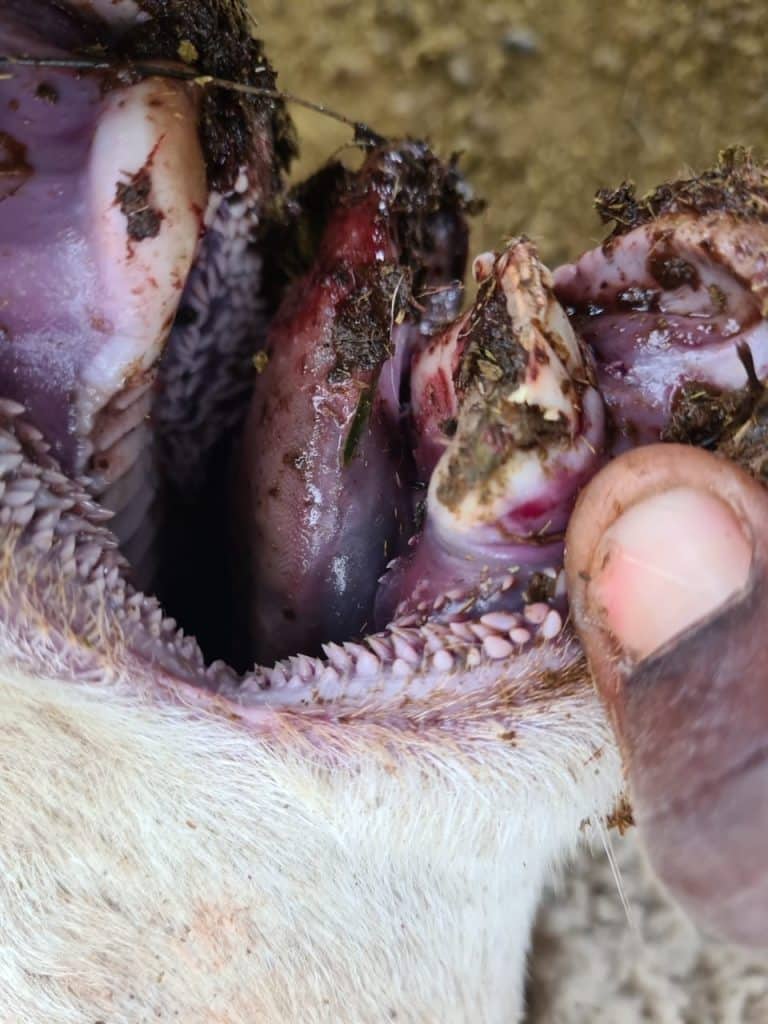Estimated reading time: 5 minutes
- The negative impact of bluetongue has been widely felt by livestock producers and their flocks over the past few years, with vaccine shortages often making the headlines.
- Bluetongue was observed as far back as 1789 following the importation of Merino sheep into South Africa.
- Blood-sucking midges, especially the Culicoides genus, are responsible for the biological transmission of bluetongue.
- Although the condition can clear up after three to seven days, it leaves in its wake severe weight loss, wool breakage, coronitis and even pneumonia.
- Dr Du Preez says preventive vaccination is and remains the most practical and effective method of control.
The negative impact of bluetongue has been widely felt by livestock producers and their flocks over the past few years, with vaccine shortages often making the headlines. This insect-borne viral disease belongs to the Orbivirus group, and so far 21 different serotypes have been identified in South Africa.
Dr Eben du Preez, an independent feedlot consultant, discusses the causes of this painful disease, ways of preventing it, and the action of the new vaccine available on the market.
Bluetongue was observed as far back as 1789 following the importation of Merino sheep into South Africa. Another possibility is that the virus was already present, but had gone unnoticed, in antelopes at the time. Cattle, deer, alpacas and many African buck species can also be carriers, says Dr Du Preez, but they typically do not present with any or severe clinical signs.
Indigenous sheep breeds are mostly resistant to the disease. “However, foreign breeds have different levels of susceptibility, and crosses with indigenous sheep breeds are reasonably resistant,” he says. “There is no cross-protection between the different serotypes. A sheep that is resistant to one serotype may still become ill if infected with another.”
Read more about foot rot in sheep here.
Transmission and clinical signs
Blood-sucking midges, especially the Culicoides genus, are responsible for the biological transmission of bluetongue. When a midge sucks the blood of an infected animal, the virus multiplies inside the midge and is transferred to another sheep via the insect’s saliva.
Clinical signs in bluetongue-infected sheep are the result of damage caused to the endothelial cells lining the blood vessels in the animal’s body. The smaller blood vessels begin to leak serum into the body’s cavities and tissues, and small spots of pooled blood may be visible underneath the skin.

Visible clinical signs include:
- Fever with a temperature of more than 40°C.
- Swollen face and ears – these are the most visible signs.
- The animal’s skin may be red; the claws may show a clear red line on the horn of the hoof or heels.
- The mouth, gums and tongue are usually most affected and contain painful lesions. The tongue may be swollen and blue (cyanosis) due to poor blood supply – hence the name bluetongue.
- A break in the wool may cause the fleece to be shed entirely after three to four months; a break in the claws (coronitis) can also occur and claws can sometimes come off completely.
- It affects muscle tissue, resulting in severe weight loss and sometimes torticollis.
Although the condition can clear up after three to seven days, it leaves in its wake severe weight loss, wool breakage, coronitis and even pneumonia. A postmortem will reveal, in addition to clinical lesions, signs of fluid in the chest cavity and pericardium, fluid in the lungs, signs of pneumonia, muscle degeneration and bleeding at the base of the pulmonary artery.
Practical and effective control
Dr Du Preez says preventive vaccination is and remains the most practical and effective method of control. The new vaccine, BLU-VAX (G4534), contains the serotypes that have been recorded in South Africa over the past three years and offers several options for producers making use of vaccination programmes.
Read more about the BLU-VAX vaccine.
“Those who farm intensively can immunise pregnant ewes without adverse consequences and young lambs can even be vaccinated during an outbreak.” Healthy animals must receive two injections, the second being administered three to four weeks later to sheep that weren’t previously immunised against bluetongue, or animals without a specific vaccination history.
“Lambs from ewes that have never been vaccinated may receive their first vaccination at one week of age and then a booster dose three to four weeks later. Lambs born from ewes that received the vaccination in the last year can be vaccinated from the age of three months, with a booster dose three to four weeks later.”
Sheep that have received two vaccinations in the first year need only receive one booster dose annually thereafter. Sheep that have not received the full range may still contract the disease. The new vaccine has not yet been tested on rams and it is recommended that they are not vaccinated in the two months leading up to the breeding season.
Keep a close watch
A veterinarian needs to monitor the situation throughout to determine the effectiveness of vaccinations and to keep a lookout for new serotypes if any of the vaccines fail to provide complete protection. This applies to all vaccines normally used on farms. – Carin Venter, Plaas Media
Contact Dr Eben du Preez on 082 561 8689 for more information.






